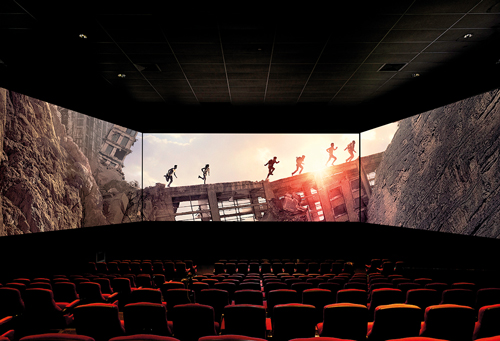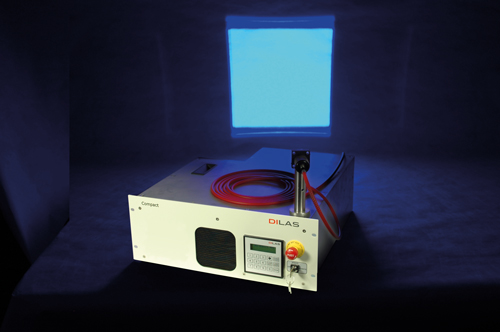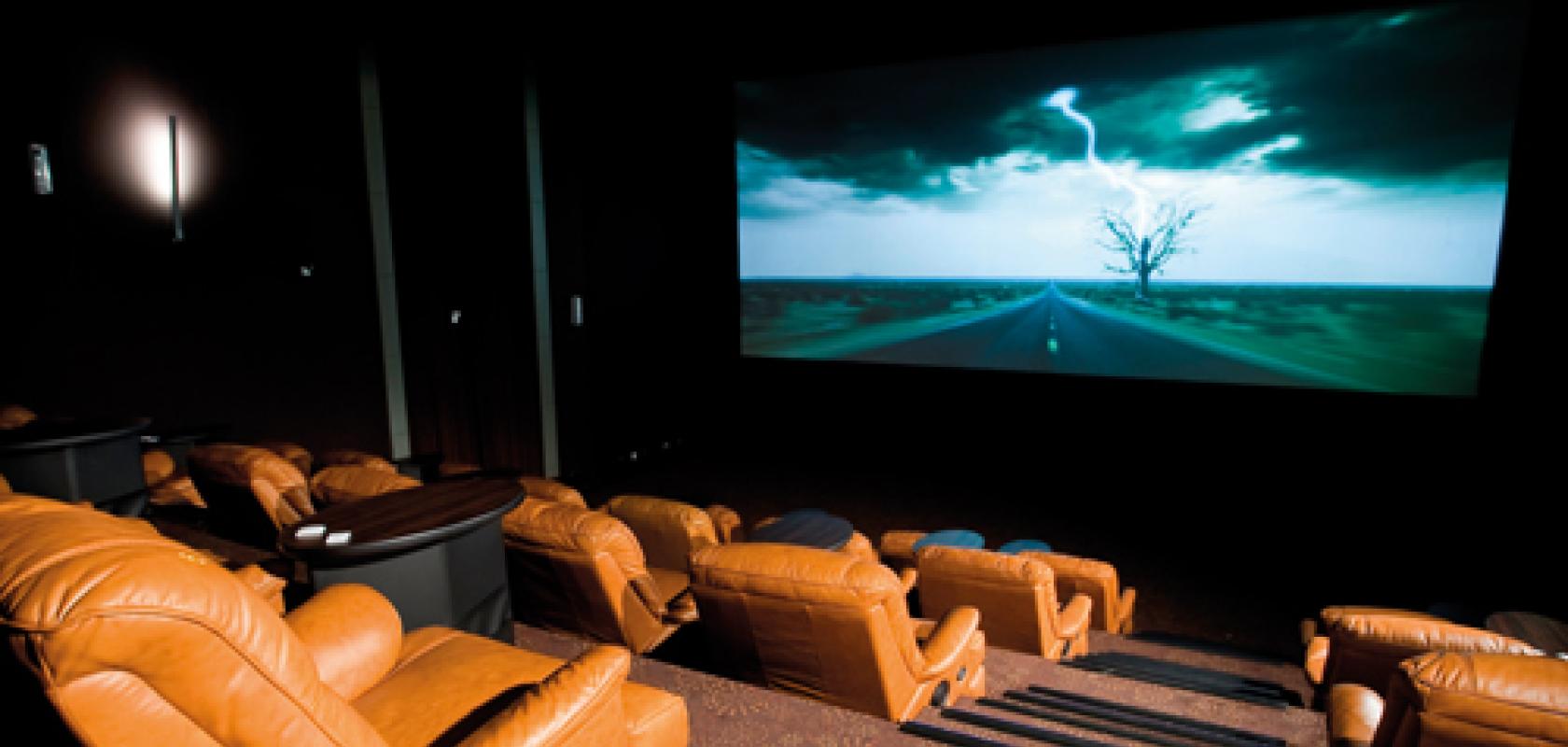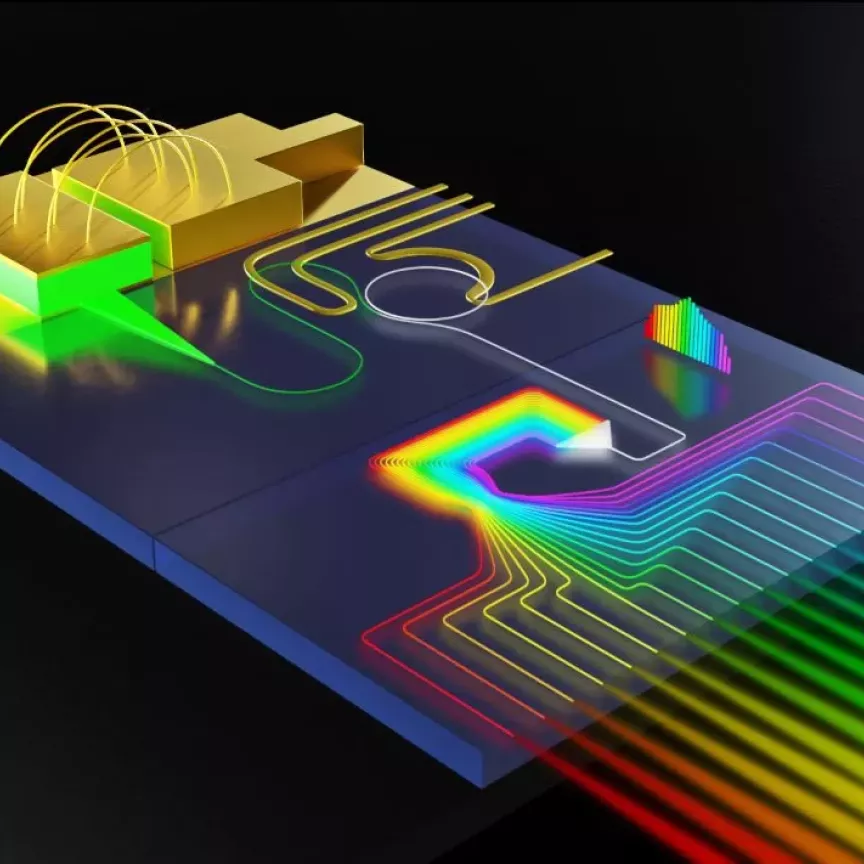Until a few years ago, the task of projecting the crisp, high resolution images that we expect in cinemas fell to lamp-based projection systems that operate at high temperatures and are power hungry. Recently, however, these have started to be replaced by laser projectors that incorporate phosphor-based components and combinations of RGB diodes to produce higher resolution images and brighter 3D performances. These advances have in turn led to a spike in the adoption of laser projection technology, representing an ideal opportunity for OEMs looking to enter new markets.
According to Gregory Niven, founder and vice president of sales and marketing at Necsel, a manufacturer of diode lasers for projectors, the new products open up new colours. ‘A laser-based projector can reproduce approximately 90 per cent of the colour perceivable by the human eye, whereas a lamp-based projector can only reproduce 40 per cent,’ he said. ‘You get literally twice the amount of colour that your eye is capable of perceiving.’ To the cinema-goer this will give the film a deep, pleasing, previously unseen set of colours. ‘These are the colours that really pop, which you just can’t get with a lamp-based projector,’ commented Niven.
Laser projectors are able to access these new colours thanks to their ability to provide a wide colour gamut. Lamp-based projectors, on the other hand, operate by filtering white light into the red, green and blue primary colours, using relatively wide bandwidths of more than 30nm, resulting in de-saturated colours unable to reach these deep levels. Laser projectors operate using multiple diodes that produce the primary colours individually at narrow bandwidths of approximately 1nm. ‘As a result, instead of seeing de-saturated primaries, you will see them saturated, and that allows the colour gamut of the projector to be pushed out, providing a wider colour space,’ explained Niven.
A long-life alternative
The increasing rate at which laser projection is being adopted is attributable to the introduction of low-cost laser phosphor projectors, according to Goran Stojmenovik, product manager at projector manufacturer Barco. These projectors use a blue diode laser to excite a phosphor surface, which in turn emits broadband yellow light. Using a colour filter, the yellow light is then split into its primary red and green components on a digital light processing chip, which then sends the light through a lens and onto a projection screen. By using only blue diode lasers, the cost point of the projectors falls. ‘The performance still stands up quite well against lamp-based projectors,’ said Stojmenovik.
The existing xenon lamp-based projectors operate at high temperatures and powers that lead them to having relatively short lifetimes between 500 and 3,000 hours. By the end of their operation, these lamps also decrease to around half their initial brightness, which leads to them needing to be replaced on a regular basis, therefore adding to running costs.
Diode lasers, such as those used in phosphor projectors, operate at low power, and offer lifetimes of more than 30,000 hours. ‘It’s a huge difference in performance,’ affirmed Stojmenovik.’ In addition, laser projectors have been proven to be 30 to 50 per cent more efficient in lumens per watt than lamp-based projectors, resulting in less power needing to be used to introduce at least an on-par brightness performance to lamp-based systems. Being able to offer a reduced cost of ownership will be a key selling point for OEMs looking to become involved in the projection industry.
Despite these improvements, laser projection is not yet regarded as the industry standard, but that time is coming. ‘We expect that in a maximum of two years’ time that laser-based projection will outsell lamp-based systems in the cinema market,’ stated Stojmenovik.

Barco's Escape: A multi-screen, panoramic movie format that offers the ultimate immersive cinema experience
Viewing the bright side
According to Niven of Necsel, the brightness achievable by lamps was capped at around 35,000 lumens in the past. ‘With lasers, projector makers such as Christie and Barco began introducing cinema projectors that were 45,000-70,000 lumens,’ commented Niven. ‘With lasers, all the light is in the form of beams that are easy to collect in the projector, whereas lamps are point sources that scatter light in all directions and only a portion of it makes it into the projector.’ Because of this, the radiance of a diode laser is approximately five orders of magnitude higher than a projection lamp.
Barco uses a more advanced method of laser projection to achieve this high level of brightness. ‘On the very long term it is quite possible that RGB technology will prevail [over laser phosphor] because it offers nicer colours and the capability to provide high dynamic range, which raises the contrast and brightness levels of projectors,’ expressed Stojmenovik. Instead of using a single type of diode as a light source, RGB projectors use a combination of diodes in the primary colours red, green and blue. These light sources are more collimated than in laser phosphor projectors, increasing the resulting brightness of the projector. ‘RGB technology is significantly more expensive than phosphor-pumped technology, but it does offer a lot of benefits as the image is better quality in every aspect,’ commented Stojmenovik. The higher brightness of RGB projectors enables them to illuminate larger cinema screens and provide a better cinema experience.
In the case of Barco’s RGB projectors, not all of the light sources are diode-based. ‘It does use red and blue diodes; the green technology however is not currently a diode laser,’ explained Stojmenovik. Barco currently uses existing green laser technology that is infrared converted and frequency doubled as a source for green light, as diode technology in the green wavelength does not yet exist at powers high enough for projection. ‘Currently the problem with green is that it has a low optical watt output per diode,’ Stojmenovik continued. ‘Today we are at the order of magnitude of one watt per diode; we need to double or triple that in order to achieve sufficient light for the brightest projectors.’
The introduction of a green diode into Barco’s RGB technology could also decrease the effect of speckle, a challenging phenomenon that occurs when many waves of the same frequency – but different phases and amplitudes – combine to form a resultant wave with randomly varying amplitude and intensity.
A resolution revolution
At the forefront of high quality laser projection, companies such as Dolby – with whom Necsel was awarded the Displays and Lighting Prism Award 2016 – are well-renowned. Together with projector manufacturer Christie, the two companies developed the Dolby Vision laser projection system, which uses state-of-the-art optics and image processing to deliver high dynamic range with enhanced contrast ratios and colour technology. With it, high contrast ratios of 1,000,000:1 can be reached, as opposed to the 2,000:1 contrast ratios achievable by lamp-based systems. Delivering a high contrast ratio enables the projectors to produce the dark, inky black colours that complement the rich, deep colours enabled by a high colour gamut. The new system also offers the high brightness guaranteed by laser projectors. ‘Instead of the minimum cinema requirement of 14 foot-lamberts, Dolby came out with a projector twice as bright at 30 foot-lamberts,’ said Niven.
With laser projectors now offering a high brightness, colour gamut and contrast ratio, the concept of high dynamic range (HDR) projection has been introduced. HDR projectors deliver exceptional detail, colour and contrast, with a far wider range of luminescence than other formats. ‘None of this could be done with a lamp-based projector,’ commented Niven.
According to Stojmenovik of Barco, the boundaries that define HDR projection are yet to be agreed on by the industry. Barco is confident, however, that when these specifications are determined, RGB diode projectors will be the only way of achieving them. ‘There is a whole discussion now in the cinema industry between Hollywood studios and technical groups as to what HDR exactly means for cinema,’ said Stojmenovik. ‘If anything, it is going to mean higher brightness, higher contrast and darker blacks, but we don’t know by how much.’
Although HDR is yet to be defined in cinemas, many entertainment systems at home can already deliver the format. The backlit pixels of LED and OLED TV screens can achieve a high peak brightness that offers HDR quality. By switching off the backlighting, the required darkness levels can also be achieved. ‘At the cinema you have a very white screen, however. Projectors therefore have a hard time blocking all the light in order to provide a very black image,’ commented Stojmenovik. Creating high peak brightness is also a challenge in cinemas with lamp- and even most laser-based projectors, as the standard luminance over a 15-metre screen is 48 candela/m2, compared to the 500-1,000 candela/m2 achievable by HDR TVs at home. ‘Those two factors in combination make an HDR proposition very expensive to make,’ Stojmenovik continued.
Laser projectors are also enabling clearer images with increased resolutions, a further requirement for HDR projection. Along with pixel count and lens power, how square a pixel appears when projected onto a screen is also a factor that determines a projector’s resolution. A pixel is originally square on the imaging chip; however, to be projected onto a screen, its light must pass through a prism and a projection lens, which reduces the pixel’s squareness by introducing flare. The high collimation of light from the diodes in a laser projector decreases the amount of flare – pixel squareness is lost this way, resulting in an increase in overall resolution. ‘Less flare, better sharpness and better contrast pixel-to-pixel add to the perceived definition of the picture,’ confirmed Stojmenovik.

Coherent-Dilas' Compact laser diode system
Changing the perspective of 3D
Perhaps the most important developments brought about through the use of diode lasers in cinema are the improvements being made to 3D projection. Three-dimensional images are created by projecting two separate images that are then observed independently by each of our eyes. Current methods achieve image separation by using horizontally and vertically polarised light, alternatively filtered by the lenses of 3D glasses. Now, thanks to lasers, this image separation can be achieved without polarisation.
‘If we extend the wavelength of the projected colours by approximately 10-20nm and then project these as well, then a pair of goggles can be used that use different RGB primary filters for both sets of wavelengths,’ explained Jörg Neukum, director of sales and marketing at diode laser manufacturer Coherent-Dilas. This colour-based 3D technique is known as 6-Primary (6P) laser projection, as it uses two sets of three primary colours to produce the image separation required for 3D projection. According to Niven of Necsel, colour-based 3D can only be accomplished with a laser, and as a result ‘you end up with the best type of 3D possible; it’s certainly better than polarisation 3D,’ he commented.
The 6P method of 3D projection is already being used in cinemas by Barco’s flagship DP4K-60L laser projector, and is intended to reverse the negative effects of the poor 3D performances that existed between 2009 and 2013, where 3D box office take rates versus 2D declined from 67 per cent to 42 per cent. With the new, superior standard of 3D projection, box office sales are expected to rise once again in the years following its adoption – a further selling point for OEMs looking to supply the industry.
As 3D films require a much higher level of brightness, projectors in cinemas showing a variety of 2D and 3D films need to be able to cope with different levels. Diode lasers respond directly to changes in current, which enables them to be dimmed selectively. ‘With lamps you can dim the projector to 60, maybe 50 per cent of the maximum brightness. With lasers you can dim it down to 30 or maybe 20 per cent of the initial brightness,’ confirmed Stojmenovik.
The move to laser-based projectors is already gaining momentum. Reel Cinemas, at the world’s largest shopping mall in Dubai, has recently replaced its existing 22 digital projectors with Barco’s DP4K-60L laser projectors, making it the largest laser cinema complex in the world.
An opportunity for OEMs
- Laser projectors use many photonics components to create superior visual performances.
- Laser projection is predicted to be installed in the majority of cinemas by 2018, outselling traditional lamp-based systems.
- The value of 3D cinema is expected to rise in the coming years thanks to a new 3D projection method.
According to Jörg Neukum, director of sales and marketing at diode laser manufacturer Coherent-Dilas, laser projectors also have multiple applications outside cinemas. ‘Laser projectors provide much more directed or parallel light and no real focal plane, which means you can project it easily on to a curved screen,’ said Neukum. ‘Now we can project a sharp image in all directions simultaneously; this is of interest for the simulators used in the automotive and aircraft industries.’ Neukum also hinted at laser projectors eventually being used for outside events, such as those taking place in stadiums or concert venues. ‘If you want to have a clear picture on a screen while bright sunlight is present, then you need to have much more power available, I don’t think we are there yet, but there are at least some application markets for this technology.’


